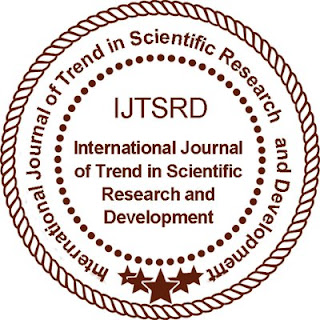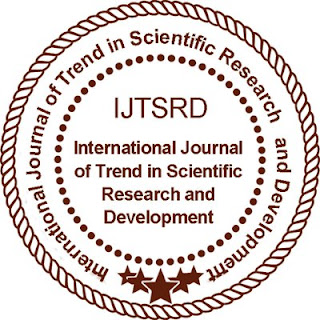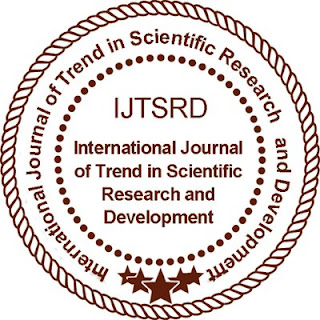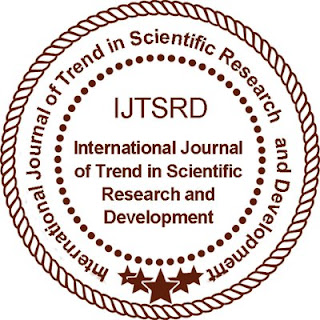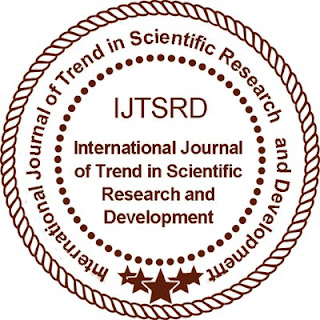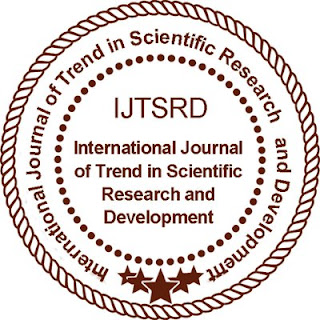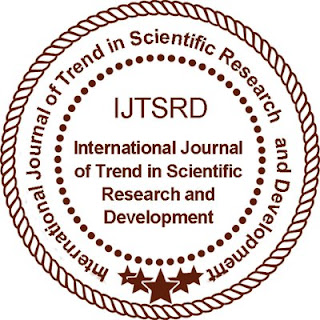Wednesday, 20 October 2021
Ayurvedic Management of Ankylosing Spondylitis Single Case Study
Friday, 15 October 2021
Theory of David Wartinger and Acharya Charaka in the Management of Renal Calculi
Tuesday, 12 October 2021
A Review Article on Different Types of Incisions According to Sushruta
Monday, 11 October 2021
Scientific Validation of Parasurgical Procedures A Review Article
Friday, 8 October 2021
Role of Diet and Lifestyle Modification in the Prevention of Cardiovascular Disease A Review Study
Thursday, 7 October 2021
A Single Case Study of Diabetic Ulcer with Charcot's Deformity
In patients with diabetes the incidence of acute charcot arthropathy of the foot and ankle ranges from 0.15 2.5 . It occurs as a result of arthritis in joint in diabetic patients. In contemporary science the management of wound is by oral and topical antibiotics along with use of betadine solution and eusol are in practice for wound care. Gomutra Arka been widely practiced for Vranshodhana and most of the time it is not accepted by group of people, because of smell and religious factor. So, there is a need for alternate simple and effective formulation which can be used in all wound for Vranashodhana. Hence here is an effort to find better substitute for the wound care and healing. A male patient 62 years old visited OPD Taranath Government Ayurvedic Medical College with complaint of Wound in right foot 3rd toe tip and got diagnosed as T2DM HTN Diabetic Ulcer with Charcot's Deformity. Successfully treated the wound with Karanja Arka Prakshalana for wound care. Few internal medication and Pathya Apathya for 21 days.
by Dr. P. V. Vijay Guptha | Dr. Syeda Ather Fathima | Dr. Shivalingappa J. Arakeri | Dr. Mohasin Kadegaon | Dr. Geethanjali Hiremath "A Single Case Study of Diabetic Ulcer with Charcot's Deformity"
Published in International Journal of Trend in Scientific Research and Development (ijtsrd), ISSN: 2456-6470, Volume-5 | Issue-6 , October 2021,
URL: https://www.ijtsrd.com/papers/ijtsrd47631.pdf
callforpapercommerce, ugcapprovedjournalsincommerce, commercejournal
Tuesday, 5 October 2021
Chagaladya Ghrita A - Drug Review
Sunday, 26 September 2021
Pharmaceutico Analytical Study of Mahagandhakam
A Critical Review on Brihat Kasturi Bhairav Rasa with Special Reference in Management of Jwara A Herbomineral Formulation
Saturday, 25 September 2021
A Comparative Clinical Study to Evaluate the Effect of Vajraka Ghrita and Murchita Ghrita as Shodhananga Sneha Followed by Virechana Karma in the Management of Eka Kushta with Special Reference Psoriasis
Wednesday, 22 September 2021
Comparative Pharmaceutico Analytical Standardisation of Kaparda Bhasma with Three Different Shodhana Media
Friday, 3 September 2021
Ayurveda Dietary Management of Certain Malnourishment Diseases
Sunday, 15 August 2021
Dwibhuja Rasa A Herbo Mineral Formulation Review
Ayurveda is the most ancient medical science which deals with the potent medicines with the use of herbals, minerals and herbominerals. Dwibhuja Rasa is one of the most potent Ayurvedic formulations which come under the herbomineral combination, it contains hingula and jayapala as main ingredients and indicated in navajwara. As it is a rasaushadhi it is more potent than the other jwarahara kashtoushadhis and assimilation in the body is much faster even though the dose is very less. In classics jwara is considered as the king of all other diseases and it can be occurred as an independent as well as a symptoms of various other diseases. no man is spared from jwara once in a lifetime. Because of the Pharmacological activities of each ingredient it can act on the jwara from its early stages. The present study aims to review the pharmacological properties and discuss the probable mode of action of Dwibhuja rasa.
By Dr. Renuka Dharane | Dr. Shankara Gowda "Dwibhuja Rasa - A Herbo-Mineral Formulation Review" Published in International Journal of Trend in Scientific Research and Development (ijtsrd), ISSN: 2456-6470, Volume-5 | Issue-5 , August 2021,
URL: https://www.ijtsrd.com/papers/ijtsrd43921.pdf
Wednesday, 4 August 2021
Gomutra – An Ayurvedic Review
Gomutra or cows urine has long history of therapeutic use in India. The tradition has been practiced for more than 5000 years as per Ayurveda. Brihatrayee has mentioned gomutra at first place among Asthamutra varga. Many researches are done on Gomutra and its effect on disease. This work consis of Ayurvedic review of gomutra in different classics.
Dr. Hemant Pundlikrao Charde | Dr. Pranam Suresh Kharche | Dr. Ramkrishna S Sakhare "Gomutra – An Ayurvedic Review" Published in International Journal of Trend in Scientific Research and Development (ijtsrd), ISSN: 2456-6470, Volume-5 | Issue-5 , August 2021,
URL: https://www.ijtsrd.com/papers/ijtsrd43835.pdf
peerreviewedjournals, reviewpapers, callforpaperhealthscience
Monday, 2 August 2021
Management of Neurological Manifestations in Covid 19 through Ayurveda
Ayurveda is a system of traditional Indian medicine which is based on sound therapeutic principles and has a proven history of empirical use. It is one of the world’s oldest holistic healing systems. According to the Ayurvedic system of medicine, a healthy person should have a stable equilibrium congenial homeostasis of Doshas Vata, Pitta, Kapha-”psycho biological rhythms , Agni metabolism digestion , Dhatu body tissues elements that provide them nourishment and Mala excreta , and the well being of senses, mind and soul. Every individual has a unique combination of these constituent elements, which is known as the individual’s Prakruti or unique mind body constitution Ashtanga Hridaya, Sharira Sthana, Chapter 3, Verse 83 . When an imbalance occurs in this equilibrium, it causes disease, and the Ayurvedic system of medicine seeks to remove this imbalance, to regain a healthy state. Ayurvedic clinical profiling of COVID 19 is a pre requisite to develop standalone and integrative treatment approaches. At present, Ayurvedic clinicians do not have access to COVID 19 patients in clinical settings. In these circumstances, a preliminary clinical profiling of COVID 19 based on review of modern medical and classical Ayurvedic literature with inputs from Allopathic clinicians treating COVID 19 patients assumes significance. It is extreme important for survival at this time to develop a body status with a good immune response for prevention and limiting severity of the disease. For this purpose the principle of daily regime, night regime and seasonal regime are to be followed. Special emphasis is to be given to healthy and nutritious diet, and immune boosting drugs should be incorporated as a part of life style in forms of various formulations like juice, lickables, decoctions, teas, tonics etc. The various examples of such immunoboosting formulations for general population are Chyawanprasha, Tulsi Ocimum basilicum L. , green tea, Ginger tea, Cinnamon tea, Turmeric milk, etc. According to Ayurveda concepts, there will be Dhatu Kshaya and Agnimandya Avastha Post COVID 19 infection. Hence, Dhatuposhana and administration of Rasayana drugs like Draksha Vitis vinifera L. , Amalaki, Gudhuchi, Vasa Justicia adhatoda L. for at least 45 days and to combat the residual effects of the virus on the body – Vishaghna chikitsa with Shirisha Albizia lebbeck L. Benth. recovery. Deepana Pachana drugs like Shadanga Paneeya may be used in case of Diarrhoea, vomiting or loss of appetite. Depending on the condition of Dhatu and Dosha, Shamana in the form of Brimhana chikitsa can be adopted to restore the function of Tridosha beside this Satvavajaya Chikitsa ayurvedic or Haridra churna Curcuma longa is suggested after clinical psychotherapy Sadvritta, and Achara Rasayana behavioural therapy can play an important role to manage post covid symptoms these are the non pharmacological approach aimed to maintain mental health. Regular practice of yogasana and pranayama with achara rasayana is useful for mental stability.
Dr. (Vaidya) Ravi Sharma "Management of Neurological Manifestations in Covid-19 through Ayurveda" Published in International Journal of Trend in Scientific Research and Development (ijtsrd), ISSN: 2456-6470, Volume-5 | Issue-5 , August 2021,
URL: https://www.ijtsrd.com/papers/ijtsrd43778.
peerreviewedinternationaljournal, callforpaperinugcapprovedjournals, paperpublicationforstudent
Management of Calcaneal Spur Vatakantak – A Case Study
Vatakantaka is a painful disorder of ankle joint it can be correlated to signs and sym toms of calcaneal spur. It is very common condition between 40 to 60 years which affect the normal routine work due to severe pain. A case with chronic Vatakantaka managed successfully by Kotttamchukadi tail for ekanga dhara on heel, Nagaradi chura for upanaha, panchadhatu agnikarma shalaka and internal medicine. It is the need to focus such practises in OPD level which yields good results and are not much expensive.
Dr. Hemant Pundalikrao Charde | Dr. Pranam Suresh Kharche "Management of Calcaneal Spur (Vatakantak) – A Case Study" Published in International Journal of Trend in Scientific Research and Development (ijtsrd), ISSN: 2456-6470, Volume-5 | Issue-5 , August 2021,
URL: https://www.ijtsrd.com/papers/ijtsrd43775.
pdf Paper URL: https://www.ijtsrd.com/medicine/ayurvedic/43775/management-of-calcaneal-spur-vatakantak-a-case-study/dr-hemant-pundalikrao-charde
ugcapprovedjournal, swithlowpublicationfees, conferenceissuepublication
A Case Study on Ayurvedic Management of Cervical Spondylosis W.S.R to Manyastambha
Cervical spondylosis is a very common condition seen now a day. It is estimated that 9 out of 10 adults will have some degree of cervical spondylosis. Degeneration of cervical vertebrae is mostly seen in elderly people but now a days due to over use of computer technology most of people develop cervical spondylosis. In the present case study, a diagnosed case of cervical spondylosis has been included for its ayurvedic management. Chief complains were pain and stiffness over the neck since 6 months and pain over the neck was radiating towards the right arm. Externally Manyabasti and Patra pottali sweda was given and during this procedure ayurvedic medicine also given. Different parameters have been assessed before and after the treatment schedule. There is a complete relief in the parameters like neck pain and stiffness whereas the parameters like pain in arm and vertigo has also shown significant improvement.
Dr. Hemant Pundalikrao Charde | Dr. Pranam Suresh Kharche "A Case Study on Ayurvedic Management of Cervical Spondylosis W.S.R to Manyastambha" Published in International Journal of Trend in Scientific Research and Development (ijtsrd), ISSN: 2456-6470, Volume-5 | Issue-5 , August 2021,
URL: https://www.ijtsrd.com/papers/ijtsrd43774.
Sunday, 1 August 2021
Ayurvedic Conservative Management of External Thrombosed Haemorrhoids A Case Study
Haemorrhoids i.e Piles or Arshas are nothing but the dilated, swollen and inflamed vein tissues present as a lump of mass of various sizes in and around the anus. It is a lifestyle disorder too, affected by advancement changes in the way people live in day to day life particularly sedentary lifestyle, Lacks of adequate physical activities, less work outs, straining during defaecation due to constipation, stress, addictions like Smoking, alcohol consumption are the main causes or factors responsible to cause this disease.As per Maharshi Sushruta, vitiated vatadosha localizesin guda vali and vitiates twak, mansa, meda and rakta resulting in strotodushti of annavahastrotasa. The chief management portfolio of arsha or piles according toayurveda includes Aushadhichikitsa, Kshar karma, Agnikarma, and Shastra karma. And on the counterpart, modern management includes chiefly Surgical interventions but the result was found to be less satisfactorily with much recurrences. That is why in this case study an humble effort made here to manage external thrombosed piles by fully ayurvedic conservative approach.
Dr. Miteshkumar D. Gujrathi | Dr. Sheshraj A. Mote | Dr. Sumedh V. Wasnik | Dr. Tushar H. Shelar "Ayurvedic Conservative Management of External Thrombosed Haemorrhoids - A Case Study" Published in International Journal of Trend in Scientific Research and Development (ijtsrd), ISSN: 2456-6470, Volume-5 | Issue-5 , August 2021,
URL: https://www.ijtsrd.com/papers/ijtsrd43766.
callforpapersocialscience, ugcapprovedjournalsforsocialscience, socialsciencejournal
A Critical Review on Yogaraja Guggulu
Dr. Rohitakumar | Dr. Ravi R Chavan "A Critical Review on Yogaraja Guggulu" Published in International Journal of Trend in Scientific Research and Development (ijtsrd), ISSN: 2456-6470, Volume-5 | Issue-5 , August 2021,
URL: https://www.ijtsrd.com/papers/ijtsrd43744
pdf Paper URL: https://www.ijtsrd.com/medicine/ayurvedic/43744/a-critical-review-on-yogaraja-guggulu/dr-rohitakumar
Friday, 23 July 2021
Management of A Ruksha Dagdha Vrana by Treatment Procedures used in Rajasekara Tradition A Case Study
Burn injuries are most devastating and painful condition causing major physical, mental, emotional and social trauma. In Sri Lanka, ~10 000 injuries and 100 deaths are burn related annually. Affected patients may lead into post burn complications like contractures, pigmented scar and keloid formation. This study was done in search of more effective, eco friendly and cost effective way to treat burns and to avoid post burn complications. A case report of second degree burn has been presented here. A male patient of 43 years of age presented with complaints of burns over both upper limbs and face due to a burst gas stove. He was associated with pain, burning sensation and slight discharge. The patient was treated with polyherbal internal and external medications used in Rajasekara tradition for a period of 21 days. Changes in subjective and objective parameters were observed during treatments and for a follow up period of 2 weeks. Pain and burning sensation were completely relieved on day 14. Oedematous red coloured wound presented at the beginning was minimal with the treatments. Appearance of healthy granulation tissue was present at the end of treatments. No post burn complications like contractures of the skin and keloid formation were identified during follow up period of 2 weeks. Sulahara, vedanasthapana and ushna guna of ingredients in formulations might support in subsiding pain while sheeta virya benefited in relieving burning sensation. Kasaya rasa, vranaropaka, vranashodana, snehana, krimihara, tvagdosahara, varnya, bhutaghna, lekhana guna facilitated in proper burn wound healing without post burn complications.
by Charitha. L. Muthukuda | Padmasiri Rajasekara "Management of A Ruksha Dagdha Vrana by Treatment Procedures used in Rajasekara Tradition - A Case Study"
Published in International Journal of Trend in Scientific Research and Development (ijtsrd), ISSN: 2456-6470, Volume-5 | Issue-4 , June 2021,
URL: https://www.ijtsrd.compapers/ijtsrd43736.pdf
callforpaperinternationaljournal, ugclistofjournals, bestinternationaljournal



